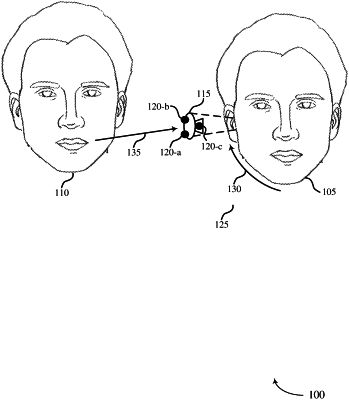| CPC H04R 1/1083 (2013.01) [H04R 1/1075 (2013.01); H04R 2420/07 (2013.01); H04R 2460/01 (2013.01); H04R 2460/13 (2013.01)] | 28 Claims |

|
1. A wearable device, the wearable device comprising:
a memory configured to store a self-voice signal via one or more transducers; and
a processor coupled to the memory, configured to:
perform active noise cancelation (ANC) applied to an input audio signal received by at least one microphone;
detect the self-voice signal, based on the one or more transducers;
apply a first filter to an external audio signal, detected by at least one external microphone on the wearable device, during a listen through operation based on an activation of an audio zoom feature to generate a first listen-through signal that includes the external audio signal;
after the activation of the audio zoom feature terminate a second filter that provides low frequency compensation; and
produce an output audio signal that is based on at least the first listen-through signal that includes the external audio signal, and is based on the detected self-voice signal.
|